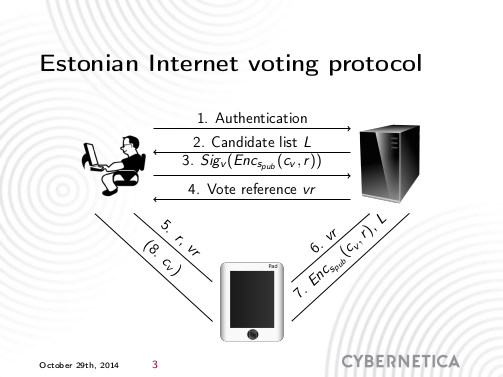
Two papers on the topic. The first:
Abstract: After the Estonian Parliamentary Elections held in 2011, an additional verification mechanism was integrated into the i-voting system in order to resist corrupted voting devices [..] However, the verification phase ends by displaying the cast vote in plain form on the verification device. [..] In this respect, we propose an alternative verification mechanism for the Estonian i-voting system to overcome this vulnerability.
The second:
Abstract: Recently, Muş, Kiraz, Cenk and Sertkaya proposed an improvement over the present Estonian Internet voting vote verification scheme. This paper points to the weaknesses and questionable design choices of the new scheme. We show that the scheme does not fix the vote privacy issue it claims to. It also introduces a way for a malicious voting application to manipulate the vote without being detected by the verification mechanism, hence breaking the cast-as-intended property. In addition, the proposal would seriously harm usability of the Estonian vote verification scheme.
TL;DR: Turkish researchers see a privacy risk in the verification process which lets voter’s mobile device to learn for whom the vote was given. Estonian researchers in the counter paper argue why the proposed improvements do not solve the issue, instead decreasing the security of the scheme.
Links:
https://eprint.iacr.org/2016/1125
https://eprint.iacr.org/2017/081